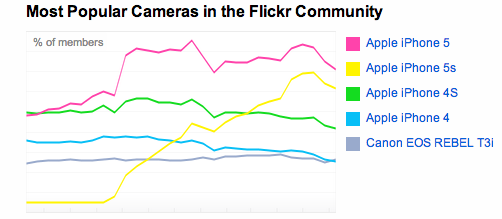The beginning of 2013 was a bad moment for newspapers in Sao Paulo, Brazil`s largest city. Big media groups were promoting large layoffs – that lead, for instance, to the closing of 46 year old Jornal da Tarde, where I used to work. Besides that, there was a bad vibe in the newsrooms, where the amount of work had increased for the remaining journalists, already tired of exhausting shifts and afraid of the next cuts. Smaller teams had greater difficulties on going to the street. That background can explain, partially, the way legacy media has faced the first street protests in the middle of the year, first about the raise on the bus fares. The initial reaction on the opinion section of the main two newspapers in Sao Paulo was to treat the movement as a distress to drivers, due to the closure of streets and avenues and the traffic generated. Worse than that, the same op-eds asked for a firm police intervention to clear the streets. By then, the logic was of the “groups of youngsters causing havoc that would be relegated to a footnote and soon be dispersed by the police”.
Facts proved them wrong, and a series of small protests soon became the country`s largest popular movement since president Fernando Collor de Mello`s impeachment in the 90s. Police`s violent reaction also hit journalists. Big media then started to change its focus on the movement. However, it had already lost ground to a new form of communication. Using their mobile cameras plugged to laptops` batteries, a simple app – the Chinese Twitcasting, that allows livefeed on Twitter or Facebook easily – and a shopping cart with a computer providing wi-fi, Midia Ninja (or Ninja Media) provided a new and intense view of the protests, from the insider`s point of view. The nonstop and shaky camera was close to police bombs` explosions, the reaction of protesters and gathered thousands of viewers. One of the most symbolic images of this period was the one of legacy media reporters transmitting on the top of buildings whil Ninja Media had its feet on the ground and side by side with protesters. Could they be what is expected as civic journalism?
Ninja stands for Independent Narratives Journalism and Action. It has emerged during the 2013 protests, but it is linked to an older cultural collective called Fora do Eixo (Out of the Axis). Its home page indicates their objective: “New technologies and new forms of using technology have opened the way for new sharing spaces, in which people do not only passive absorb information, people produce and exchange information. In this new context, of networks connected to streets, multimedia citizens emerge with the capacity of make its own opinions and share it in the virtual world.” The group includes some journalists, but also many activists. It works on an open participation basis – anyone interested can join in, previously providing personal data, skills and resources – and also on the concept of collective authorship, where many texts are signed not by a person, but by the group.
They soon called legacy media attention. The first reactions, however, were harsh. Many of my journalist friends on social media were diminishing Ninja Media’s role, classifying them as “a bunch of guys living with their parents that take journalism for just going out in the streets with their cameras on”. Some other bureaus went after Out of the Axis, digging accusations of fraud. The group also had a drawback when granted access to interview Rio de Janeiro`s mayor Eduardo Campos – in which they were considered underprepared, with no previous research to contradict numbers presented by the politician. This, for some time, was the argument used by legacy media to try to reassure its importance in the digital ecosystem, as well the the defence of an alleged impartiality that is, in theory, inherent to the profession.
Ninja Media takes sides on the stories, as Bruno Torturra, one of its creators, made clear. “Our main role is to reclaim for journalism and communications their activist role as the public’s eyes and to offer information that is increasingly qualified to defend democracy,” he said in a 2013 interview. This engagement he defends can be seen as one of the basis of civic journalism. From a point of view, traditional journalism can also be considered based on opinions and sides – of what subject gets in and which ones are out, what goes to the headlines and whats is drowned in the footnotes, which side goes to the lead and so forth. That is not the only problem Ninja Media and legacy media share. In that same interview, when asked about fact checking, Torturra answered accountability could be exercised by their followers on the web. Personally, and as a journalist, the “publish first and check later” policy that has also taken part of the media in the digital age seems more a problem than a solution, or a losing game, as it adds very little in terms of meaningful information.
Problems apart, Ninja Media left their mark on traditional journalism, which, after being “shaken” technologically, returned to the streets more camera savvy and vibrant. A formal change that may not be able to solve the activity`s bigger problems, but at least showed some need to go after new formats and ways to tell a story. Ninja Media also tried to approach new journalistic enterprises, as Ponte, a collective of reporters dedicated to cover human rights and security issues. There is also, however, the financial problem of backing up new media enterprises, as points out Elizabeth Lorenzotti, researcher from Sao Paulo University (USP). “I think it breaks up with a (journalism) model that`s been suffering for a long time, but the way of financing these collectives is still under experimentation and needs better structuring.”






